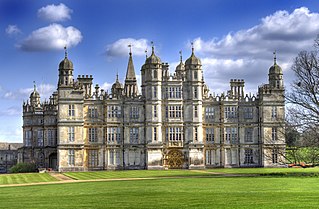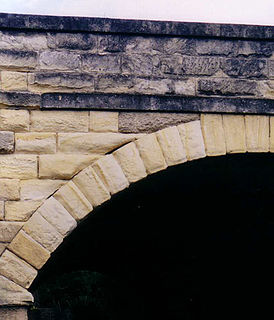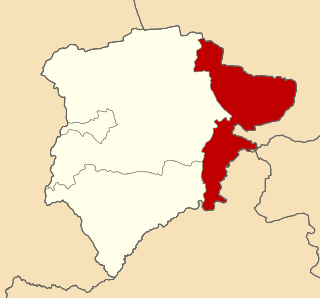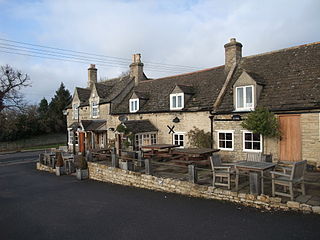Ketton stone is a Jurassic oolitic limestone, cream to pale yellow or pink in colour, used as a building stone since the 16th century. It is named after the village of Ketton in Rutland, England. It was used as freestone, mostly in buildings outside Rutland, particularly in Cambridge, where it was used in many of the colleges. [1]
The Jurassic period was a geologic period and system that spanned 56 million years from the end of the Triassic Period 201.3 million years ago (Mya) to the beginning of the Cretaceous Period 145 Mya. The Jurassic constitutes the middle period of the Mesozoic Era, also known as the Age of Reptiles. The start of the period was marked by the major Triassic–Jurassic extinction event. Two other extinction events occurred during the period: the Pliensbachian-Toarcian extinction in the Early Jurassic, and the Tithonian event at the end; however, neither event ranks among the "Big Five" mass extinctions.

Oolite or oölite is a sedimentary rock formed from ooids, spherical grains composed of concentric layers. The name derives from the Ancient Greek word ᾠόν for egg. Strictly, oolites consist of ooids of 0.25–2 millimetres' diameter; rocks composed of ooids larger than 2 mm are called pisolites. The term oolith can refer to oolite or individual ooids.

Limestone is a carbonate sedimentary rock that is often composed of the skeletal fragments of marine organisms such as coral, foraminifera, and molluscs. Its major materials are the minerals calcite and aragonite, which are different crystal forms of calcium carbonate (CaCO3). A closely related rock is dolostone, which contains a high percentage of the mineral dolomite, CaMg(CO3)2. In fact, in old USGS publications, dolostone was referred to as magnesian limestone, a term now reserved for magnesium-deficient dolostones or magnesium-rich limestones.
Contents
Nowadays, the major quarry at Ketton produces limestone for the adjoining Ketton Cement Works but selected stone is still set aside for cut building blocks.

Ketton Cement Works is a large cement plant and quarry based in the village of Ketton in the county of Rutland in the United Kingdom. Now owned by HeidelbergCement, the plant produces around one tenth of the UK's Portland Cement needs. Ketton works employs around 220 people and is at the forefront of sustainable cement production, namely through the increasing use of non-fossil fuels for the kilns.















